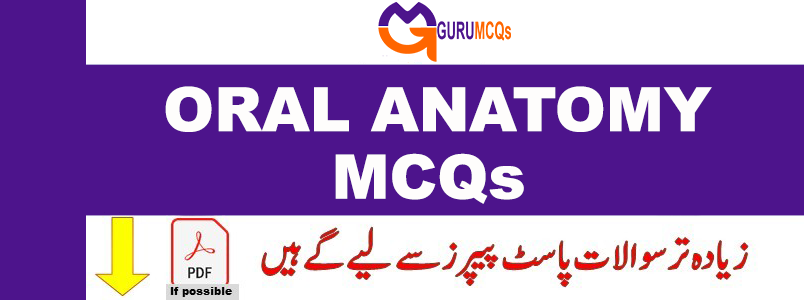
Gurumcqs.com offers a comprehensive collection of 2000+ basic and advanced oral anatomy MCQs, complete with answers and detailed explanations. This section is dedicated to covering all essential aspects of the oral anatomy subject, focusing on key topics related to the anatomy of the mouth and teeth. These include Basic Oral Anatomy, Calcification and Eruption of Teeth, Deciduous Dentition, Occlusion, Permanent Dentition, Physiologic Form of Tooth and Periodontium, Osseous Structures, TMJ, and more. The questions are carefully selected from reputable reference books on oral anatomy. These dental anatomy MCQs are valuable for interview preparation, entrance examinations, competitive exams, and certifications, catering to individuals with varying levels of experience, whether they are seasoned professionals, freshers, or students. Additionally, you can explore MCQs on medical topics on the platform.
41. The tooth that is commonly seen in an abnormal relation and contact with its adjacent teeth of the same arch is ________________?
A. Mandibular first premolar
B. Mandibular lateral incisor
C. Maxillary central incisor
D. Maxillary lateral incisor
42. Largest embrasure lies between______________?
A. Maxillary central incisors
B. Maxillary central and lateral incisor
C. Maxillary canine and first premolar
D. Maxillary lateral incisor and canine
43. The embrasure areas in the following areas are contentious______________?
A. Labial and lingual
B. Lingual and Occlusal
C. Incisal and Occlusal
D. Labial and Occlusal
44. All embrasure spaces are reflection of the______________?
A. Form of the teeth involved
B. Size of the teeth involved
C. Eruption sequence involved
D. None of the above
45. The biting forces at molar region during mastication is_______________?
A. 20 to 55 pounds
B. 30 to 75 pounds
C. 50 to 75 pounds
D. 90 to 200 pounds
46. The faciolingual angulation of the upper central incisor is approximately___________________?
A. 20°
B. 28°
C. 33°
D. 38°
47. All are true about calciotraumatic line, except______________?
A. Due to caries
B. Due to death of odontoblastic layer
C. It remains after caries is removed
D. Because of odontoblastic migration from cell rich zone
48. Posterior embrasures are generally larger on the lingual than on the facial, with the contact area within the facial moiety, except between maxillary_______________?
A. Premolars
B. 1st and 2ndmolar
C. 1st premolar and cane
D. First molar and 2nd premolar
49. The distance from the CEJ to the alveolar crest normally is____________?
A. 1 – 1.5 mm
B. 2 mm
C. 2 – 2.3 mm
D. 3 mm
50 .Which teeth show less curvature on the crown above the cervical line than any other teeth_____________?
A. Maxillary anterior
B. Mandibular canine
C. Mandibular anteriors
D. Maxillary canine

Pingback: Oral Pathology MCQs with Answers for Exam Preparation - GURU MCQS